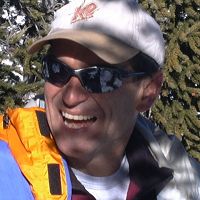Brooks et al., 2013
A cross-site comparison of factors controlling streamwater carbon flux in western North American catchments (Invited)
Brooks P.D., Biederman J.A., Condon K., Chorover J., McIntosh J.C., Meixner T., Perdrial J.N. (2013)
Abstract H43B-1445 presented at 2013 Fall Meeting, AGU, San Francisco, CA, 9-13 Dec.
-
Catalina-Jemez, INVESTIGATOR
-
Catalina-Jemez, STAFF, COLLABORATOR
-
Catalina-Jemez, INVESTIGATOR
-
Catalina-Jemez, INVESTIGATOR
-
Catalina-Jemez, INVESTIGATOR
-
Catalina-Jemez, Luquillo, Reynolds, INVESTIGATOR
Abstract
Increasing variability in climate is expected to alter the amount and form of terrestrial carbon in stream water both directly, through changes in the magnitude and timing of discharge, and indirectly through changes in land cover following disturbance (e.g. drought, fire, or insect driven mortality). Predicting how these changes will impact individual stream-catchment ecosystems however, is hampered by a lack of concurrent observations on both dissolved and particulate carbon flux across a range of spatial, temporal, and discharge scales. Because carbon is strongly coupled to most biogeochemical reactions within both aquatic and terrestrial ecosystems, this represents a critical unknown in predicting the response of catchment-ecosystems to concurrent changes in climate and land cover.
This presentation will address this issue using a meta-analysis of dissolved organic, dissolved inorganic, and particulate organic carbon fluxes from multiple locations, including undisturbed sites along a climate gradient from desert rivers to seasonally snow-covered, forested mountain catchments, and sites disturbed by both fire and extensive, insect driven mortality. Initial analyses suggest that dissolved (organic and inorganic) and particulate fluxes respond differently to various types of disturbance and depend on interactions between changes in size of mobile carbon pools and changes in hydrologic routing of carbon to streamwater. Anomalously large fluxes of both dissolved and particulate organic matter are associated with episodic changes in hydrologic routing (e.g. storm floods; snowmelt) that connect normally hydrologically isolated carbon pools (e.g. surficial hillslope soils) with surface water. These events are often of short duration as the supply of mobile carbon is exhausted in short term flushing response. In contrast, disturbances that increase the size of the mobile carbon pool (e.g. widespread vegetation mortality) result smaller proportional increases in concentrations, but these elevated concentrations persist for a longer period of time as increased solute sources are transported to surface water through persistent, subsurface flowpaths.
Citation
Brooks P.D., Biederman J.A., Condon K., Chorover J., McIntosh J.C., Meixner T., Perdrial J.N. (2013): A cross-site comparison of factors controlling streamwater carbon flux in western North American catchments (Invited). Abstract H43B-1445 presented at 2013 Fall Meeting, AGU, San Francisco, CA, 9-13 Dec..
 This Paper/Book acknowledges NSF CZO grant support.
This Paper/Book acknowledges NSF CZO grant support.
Explore Further






